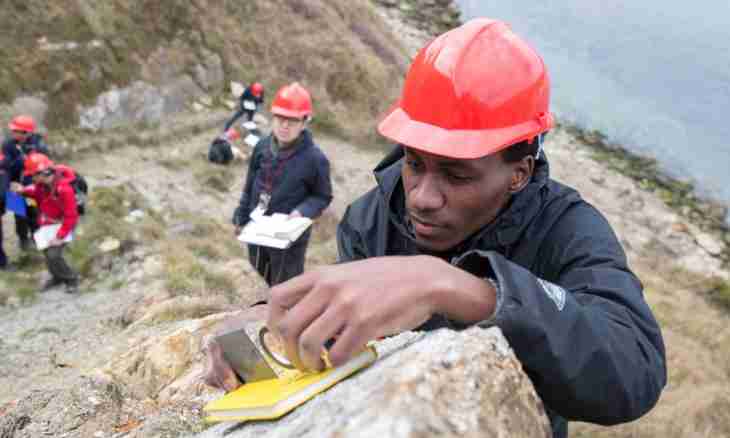In consciousness of most of people the geologist is a bearded person with the hammer and a backpack who is engaged only in search of minerals in total absence of communication with a civilization. Actually geology – very difficult and many-sided science.
What are geologists engaged in?
The geology is engaged in studying composition of earth crust, its structure and also the history of its formation. Three main directions of geology are allocated: dynamic, historical and descriptive. The dynamic geology investigates changes of earth crust as a result of various processes, such as erosion, destruction, earthquakes, volcanic activity. Geologists-historians are concentrated on imagining those processes and changes which happened to the planet in the past. To most of all habitual image of the geologist there correspond experts of descriptive geology as this branch of science is engaged in studying composition of earth crust, contents in it any given minerals, minerals or breeds.
The geology became demanded science during a scientific and technological revolution era when the mankind needed a set of new resources and energy.
Researches of subsoil for descriptive geology include not only expeditions with collecting samples or prospecting drilling, but also the analysis of data, drawing up geological maps, assessment of prospects of development, creation of computer models. Work "in the field", that is direct researches on the area, take some months of a field season, and the geologist spends the rest of the time in laboratory. Naturally, the main subject to search are minerals.
The geology is engaged, in particular, in clarification of exact age of the planet Earth. Thanks to development of scientific methods, it is known that to the planet about 4.5 billion years.
Problems of applied geology
Experts of geology of minerals traditionally are divided into two main groups: those who look for ore fields, and those who study nonmetallic minerals. Such division is caused by the fact that the principles and regularities of formation for ore and nonmetallic minerals are various therefore geologists, as a rule, specialize in something one. The majority of metals, for example, iron, nickel, gold and also some types of minerals belongs to useful ore minerals. Nonmetallic minerals include combustible materials (oil, gas, coal), various construction materials (clay, marble, crushed stone), chemical ingredients and, at last, precious and semiprecious stones, such as diamonds, rubies, emeralds, jasper, carnelian and many others. Work of the geologist is in that on the basis of analytical data to predict bedding in any given region of minerals, to conduct a research in a field expedition with the purpose to confirm or disprove the assumptions, and then, relying on the received data, to make the conclusion about prospects of industrial mining. At the same time the geologist proceeds from estimated quantity of minerals, their percentage in earth crust, commercial justification of production. Therefore the geologist has to be not only physically hardy, but also have ability to analytical thinking, know the bases of the economy, geodesies, to constantly improve the knowledge and skills.

